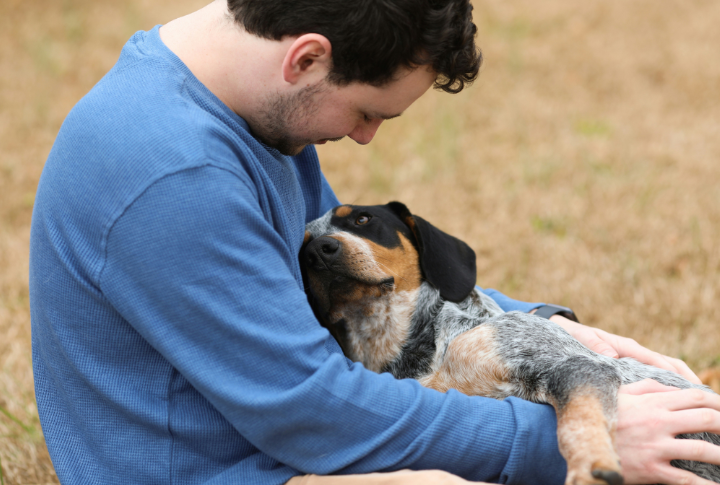Is Your Pup In Pain? 15 Signs To Watch For & Home-Based Relief

Dogs aren’t great at raising red flags when something hurts—they hope we notice. Some signs whisper, others shout, but all deserve our attention. This article unpacks 10 often-overlooked pain signals, followed by five easy home fixes every dog owner should know. Let’s start with the signs.
Decreased Activity Levels

That once-hyper pup now avoids stairs and skips fetch? It’s not laziness; that’s likely pain. When energy drops without reason, especially in typically active dogs, discomfort is often to blame. Energy conservation is a survival instinct. Keep tabs on unexpected slowdowns.
Changes In Appetite

Is the dinner bowl still full after hours? Something’s off. Pain can dull hunger and make chewing uncomfortable. Dogs might avoid hard kibble or skip meals altogether. If your food-loving canine suddenly becomes picky, it might not be a matter of taste; it could be distress.
Altered Sleep Patterns

A dog who paces at 2 a.m. or suddenly naps through every afternoon may be hurting. Pain interrupts rest just like it does for people. Tossing, turning, or snoozing in awkward spots could mean your pup’s trying to escape an ache.
Vocalizations

That little whine you barely notice? It could be your dog pleading for help. Sudden yelps or whimpering when touched are often pain-related. Sound is one of the few ways dogs can call for backup—don’t ignore it.
Excessive Licking Or Chewing

Dogs obsessively lick or chew where it hurts, even without visible injury. If the behavior looks compulsive or starts damaging the skin, pain is usually to blame. Those raw paws or damp limbs are not necessarily grooming quirks. They’re signs of a dog self-soothing through discomfort.
Panting And Shaking

Is your dog panting like it ran a marathon indoors or on the couch? Pain often triggers stress responses, and those look a lot like overheating: panting, trembling, even drooling. If there’s no exertion or heat, something more profound is stirring.
Avoidance Of Physical Contact

Dogs who once leaned into snuggles but now flinch at touch may be dealing with pain. Respect the withdrawal, but also recognize it for what it is. A warning – suddenly ducking away when you reach out? Don’t take it as stubbornness or moodiness; it’s often a form of communication and, in many cases, a sign of discomfort or distress.
Changes In Posture

Dogs in pain may shift their weight or move stiffly to protect sore spots. You might see a low tail or limping walk—clear signals that something hurts. Unusual posture is a coping strategy, not a personality quirk. Watch closely for that subtle arch in the back.
Aggression Or Irritability

Snapping during grooming or grumbling when kids approach? Pain turns even the gentlest dog into a grump. If irritability appears out of nowhere, especially when touched or approached, it could be your dog’s way of saying, “Back off, it hurts.”
Restlessness

A dog that won’t settle – pacing, circling, or frequently changing positions – isn’t just being indecisive. This kind of restlessness often signals physical discomfort. When paired with signs like panting or whining, it can be a clear call for help that shouldn’t be ignored.
Providing A Comfortable Resting Area

Let’s shift gears and talk comfort. First fix? A better bed. A thick orthopedic mat gives aching joints room to breathe. Avoid cold tile and drafty corners. Like us, dogs crave a soft, warm spot when they hurt. Give them that luxury.
Gentle Massage Techniques

Light pressure along the spine and hips can ease muscle tension and boost blood flow. If your dog melts into the massage, you’re doing it right. Keep your strokes slow, always watching for signs of flinching. Think of it as a mini spa session with real therapeutic benefits.
Applying Warm Or Cold Compresses

Warm soothes; cold numbs. The key is knowing when to use which. For swollen joints, apply a cold compress wrapped in cloth for about 10 minutes. For stiffness or muscle tension, use a warm compress instead. Always rotate gently, observe your dog’s reaction, and never place compresses directly on the skin.
Incorporating Omega-3 Fatty Acids

Omega-3 fatty acids help reduce inflammation, particularly in dogs with arthritis. Add a vet-approved dose of fish oil to their food and monitor for increased mobility and energy. Think of it as a natural lubricant for stiff joints. The benefits build gradually, but they’re worth the wait.
Maintaining A Healthy Weight

Every extra pound presses on joints like a lousy backpack. Shedding just 10% of body weight can dramatically reduce pain. Portion control, low-impact walks, and fewer treats make a big difference. Your dog doesn’t need a six-pack – just less strain.






